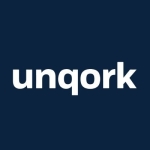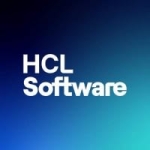What is our primary use case?
One use case which we're thinking about at the moment is for a clearing platform for security clearing for risk assessment on margin accounts. It happens from time to time that there is a situation called margin call, which is basically a process where one of our operators from the risk unit behind securities needs to get more money or more assets from the client who owns the margin account.
At the moment, the process is that they have a spreadsheet or checklist in digital form and they go through a highly governed process. They follow a printed-out or virtual copy step-by-step. At each step, they're getting a sign-off and a peer review of each step by a peer in the risk department and it takes forever. It's a lot of admin.
The Mendix base automation is basically replacing this document, this checklist. It just makes it much more helpful as all this has to happen within an hour, that call and getting assets, for example.
The company is massive and each use case is very different, however, at the moment, those tend to be small processes and trying to cut down the administration, which normally means writing documents, archiving files, scanning documents, that kind of thing, which people currently do manually.
What is most valuable?
We like Mendix a lot. In terms of technology, it is really good.
We find it intuitive and easy to use.
We are quite happy with the solution and look forward to moving to the cloud. We have it hosted in the Docker systems on-prem. When we move to the cloud, we can see that it will be simple.
What needs improvement?
We specifically want version control of whatever we deploy in the production. However, with Mendix, unfortunately, storing things in binary is quite a lot. If you put it into Github and stuff like that, we'd like it to be a text type of source code rather than binary.
There are not enough developers who are using Mendix. The knowledge base available online and in the market is not as rich as other competitors.
In terms of workflow automation, local automation, they should focus on integrating AI modules. Many companies are trying to build their own models, however, if you compare with how much learning Google has done on their Google models, it makes sense to go for integrations rather than starting from scratch with teaching your AI. That's roughly how we see the domain of RPA and local automation platforms.
The integration or making use of some artificial intelligence and models which are out there could be a lot better. There should be some kind of marketplace.
The user interface styling is a bit tricky. It's got a restrictive and highly sophisticated styling which could be better.
For how long have I used the solution?
We put the solution into production about a year ago now.
Buyer's Guide
Mendix
September 2025
Learn what your peers think about Mendix. Get advice and tips from experienced pros sharing their opinions. Updated: September 2025.
869,832 professionals have used our research since 2012.
What do I think about the scalability of the solution?
We have a new platform, which we put into production about half a year ago, and we had an initial 10 sort-of automated processes on top of it at the moment. It's going to grow, obviously. That's the idea.
So far, we are happy with the potential it has for scaling, although in practice we have not yet tried.
How are customer service and support?
We haven't yet had to reach out to technical support and therefore I can't speak to how responsive or knowledgeable they are at this time.
How was the initial setup?
For Mendix, we're not using any kind of collaboration tools or deployment which Mendix provides as we have our own tools and deployment and task management and risk management right inside our organization. We're not going to jump from one tool to another. Just because we have Mendix code, we're not going to use its deployment. We are using current tools, which are established in the enterprise.
It's important that Mendix stays flexible in terms of source code, in terms of deployment, and that it doesn't lock things down. If, for example, there would be a restriction suddenly on which kind of deployment mechanism can be used, then that would cut some customers out. That goes through the approval of risk management. Risk management is very important when you're deploying to production.
What about the implementation team?
We use our own in-house team and tools for implementation purposes.
Which other solutions did I evaluate?
At the moment, we are using Blue Prism for RPA. We are using also Mendix for the workflow, which is not quite RPA. We're combining those two. We do have an eye on UiPath due to the fact that, in the last year, we're feeling that Blue Prism is falling behind the competition at the moment.
We did look at other tools, however, it wasn't me who did that. It was about two and a half years ago. There was a lot of research on everything on the market. Honestly, I don't know why they picked Mendix, however, they were clearly a strong candidate. Looking at Gartner shows it's a very strong candidate. I was quite surprised that it doesn't have a bigger clientele.
What other advice do I have?
We are just a customer and end-user.
We're not using the latest version of the solution, however, we're going to upgrade to the latest one. In Mendix, we're using 8.9, however, we're now going to upgrade soon as some of our teams have just started using later libraries, and obviously, that needs upgrading.
We're heavily governed and our governance processes and approvals for cloud take forever. We have these automations deployed on-premise. Both Blue Prism and Mendix are hosted internally and will be for a number of years. We want to go cloud, however, first, we need to get our internal approvals in order.
I'd rate the solution at a seven out of ten. It's one of the best which we touched and we're still happy with it. However, dealing in binary makes me deduct a few points.
Which deployment model are you using for this solution?
On-premises
Disclosure: My company does not have a business relationship with this vendor other than being a customer.




















